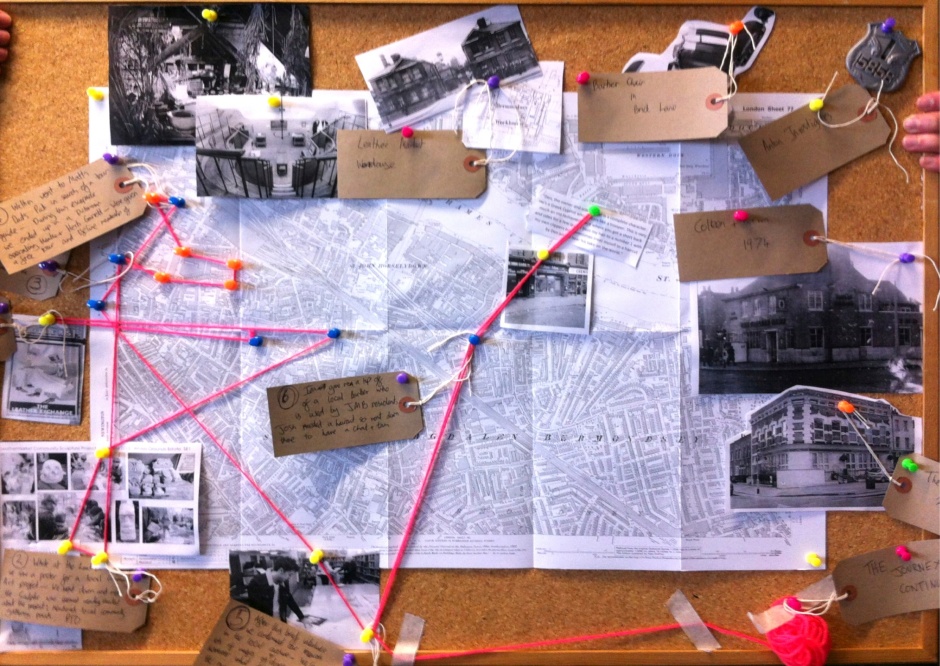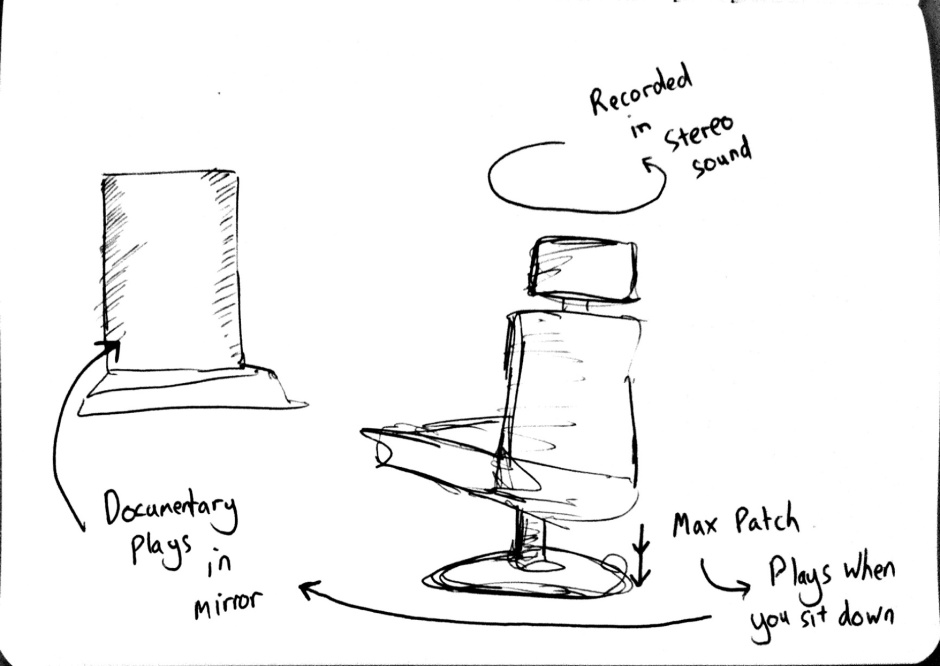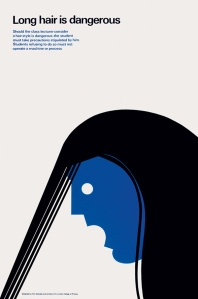
The Plan

Anton Allison – Project Write Up
For our introductory research as a group we had a quick brainstorm and decided where better to start then at the local pub in the area of Bermondsey street which is called the leather market pub as we thought it would be the best place to find friendly and willing residents we could interact with and build a repour with to gain a sense of community welcoming and to get the ball rolling on ideas of something we could get started.
This didn’t go to plan at first, as there wasn’t a lot of people there or the type of people we had in mind to begin with, it was mostly business type men who just came in for a lunchtime drink.
Josh and matt then decided we should go to the JMB offices opposite as it was said to be a place where a lot of residents meeting usually take place.
We then entered the building where we asked a lady on the desk gave us a little incite on a couple up and coming events and how often they carry out such meetings I then noticed there some flyers on an information stand for some local projects taking place in the area including a sculpting class and capoeira with then led us to a guy called Austin which happen to run both projects so we thought we would pay him a visit as he was local five minutes down the road on Tanner street in a local flat which was converted into a space to display the local residents sculptures they had been making.
As we approached Austin and introduced ourselves he let us know he was the main organiser for the events we had been hearing about and gave us a lot of information on where we could get in contact with some residents of the area and a described a lot of history involving the JMB neighbourhood, this led us in to a hour conversation he also let us know he was running a capoeira class so he seemed to be a multi talented man which was very engaged in what goes on in the area.
After speaking with him we exchanged details with him and planned to later meet up with him at a local residents event.
Josh and matt then attended an closing party for the sculpting projects as we were told there would be a promising number of residents to talk to but this wasn’t the case in fact not a lot of people attended so is was a bad turn out.
Matt dad then offered some help as he had some general information on the area and some local pubs that were very popular in the area and that a lot of them had been shut down and new ones were opened, this was very helpful as it gave us a idea of how the area has changed over the years because a lot of businesses sometimes because of financial matters, we gathered the idea that as the areas property prices rises a lot of people were put out of business.
Matt and Josh then went to enquire about finding somebody else with a lot of knowledge on the area that could act as somewhat of a guide to what’s what in the area, at this stage this seemed the best option because there didn’t seem to be a lot of residents around for us to connect with so we needed some more help from a different prospective and some fresh thoughts on what we could do next.
We then went to do some research on the area in the library using the Internet and some newspaper clippings to gain some further knowledge on some local businesses, where we came across a local barbershop which was also referred to us by a local resident so we decided to approach him as it seemed like a promising chance to get some stories or leads on the areas history.
Josh went to meet the barber named Dennis and decided to get a hair cut he was quite stunned by the barbers hair as he had quite a considerably amount of for a barber but as he got his hair cut he was very pleased with how talented the barber was, Dennis was very pleased to help with the our project and had a lot of stories for us to hear as he is very talkative and friendly and obviously has a lot of interaction with his customers while cutting hair, we thought he would be very useful and could actually be a big part of our project.
This then led us to come up with an idea where we could make an interactive barber chair where people could hear some of the story’s he had to offer which would be very interesting hearing his background and his decent form his country.
Our first ideas was to get people to actually get their hair cut as customers where they could come along to the show and sit in the chair while hearing a story but then decided to get an actually barber chair which Josh had found for sale in brick lane and use a use a two way mirror sort of a holographic mirror where people could come and sit in the chair while watching them self in the mirror while wearing a pair of binaural headphones which would create an surround sound effect of Dennis the barber cutting somebody hair and in hind sight feel like the person in the seat was getting a hair cut.
At the moment we have our idea in theory but yet have time to gain the equipment and organise for the participators to be available.
Hopefully this will all come together in the next few weeks as we are powering toward getting it finished but we are generally happy with what we have done so far as we were sceptical about the amount of which had not shown up in beginning of the project.
Crackin’ Barnet Introduction Draft
“Everywhere the Carnabetian Army Marches on”
A Weller wig, a Crackin’ Barnet, an exaggerated Caesar cut or a Gallagher. Worn by teenagers, rock stars and men who should know better, for around 50 years the archetypal ‘mod haircut’ has been a symbol for adolescent rebellion, clean living and crushing, desperate mid-life crisis. As a young peacock’s plumage or the last ditch attempt of clawing back a Lambretta fuelled youth it’s split opinion and relationships. But why is it that shape? Why is it that particular? And more importantly, is it Iconic or just ridiculous?
As a recovering victim of this haircut I have decided that it’s the perfect piece of design to study. It’s something endlessly replicated, a moveable, growable piece of fashion. It comes in various guises but the basic structure remains the same: a short fringe, a regal high top and tremendous, almost sarcastically long sideboards. Starting life hanging out in jazz clubs in the early 60’s as a symbol for elegance and ending up wielding a deckchair on Brighton beach the Haircut has gone through many personality changes and been a participant in many of the pivotal moments in British popular culture over the last five decades. In the first section of this essay I am going to look into how the hairstyle has been tweaked and how its connotations have covered everything from feminism, masculinity, aggression, tribalism and metrosexuality. Then I am going to look into my own experiences of The Barnet. Looking at what it meant to me and why I took so much time on crafting such an over the top ‘do and why, to everyone’s relief I eventually gave it the chop.
Crackin’ Barnet
Known as a Weller Wig, The Exaggerated caesar cut, Sideboards, a Wiggo, Barnet or a bit of Mod Plumage. I am going to examine the haircut that causes rifts in families and relationships. Where does it come from? What does it mean? Is it the sharpest haircut about or just a midlife crisis nightmare or a ‘do?
For the 3 sections of my essay I am going to first examine the origins and evolution of the style through the past 5 decades, then through an autobiographical account of my own flirtation with the style before finishing with a children’s book from the haircut’s own point of view.
Tom Eckersley, Master of the Poster
At half five on a Tuesday evening I’m not in the mood for posters. Even if they have been created by the ‘Master’, I’m not in the mood. The posters in question are by Thomas Eckersley, Dr Paul Rennie says he was instrumental in “conceptualising modern graphic design as a professional practice distinct from commercial art”and at this time of the day I’m going to take his word for it and check later.
After checking later, I find that Dr Paul Rennie is telling the truth and Eckersley is also responsible for founding the first Graphic Design undergraduate course in the UK and making LCC what it is today. He’s quite a big deal.
Based in the horrible purgatory of the “Upper Street Gallery” however this reverence is sapped slightly. The posters lightly puncture the white nothingness as best they can but I want to see them more intimately rather than in a strange halfway hall. Seeing the evolution of Eckersley’s style from tertiary colours and tangible print marks to bright, flat geometry is great for budding posterers. Is the work to my taste? It’s alright. In a way the posters seem to be so off trend and non offensive that it’s a nice reprieve from the usual ‘cutting edge’ stuff placed around the college.No edgy nakedness or controversial statements here. Eckersley’s later work is the kind of thing you remember seeing on library notice boards when you were younger, big shapes and nice colours without ever being overtly fresh. This isn’t a bad thing. In fact I think it’s my favourite section of his work.
In a corner are students and lecturers own designs to advertise the show – Why? It seems even the curator didn’t have faith in this idea. The posters are consigned to a little cave at the back of the hall, no frames and stacked one over the other. Some don’t even reflect Eckersley’s work- What’s the point?
After this little interlude I go back to Eckerselys work. I’m warming up to being in a mood for posters but still I keep coming back to the off-putting vaccum of the space. In a room generally used to house a large group of students and their work, even ‘The Master’ himself has trouble making his posters be more than just posters. Glanced at en route to somewhere and then forgotten. The only people who usually stop in the hall are the odd industry scout looking for fresh new designers and proud parents. I can say for a fact that Thomas Eckersley is not a fresh new designer and his parents are not going to be coming to the exhibition. So why put it here?
Still, good posters.
Beautifully crafted, going up and down, happy and sad it looks weird on it’s own, and it’s furry.

